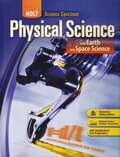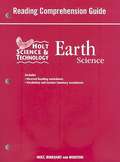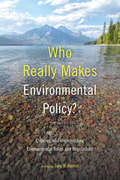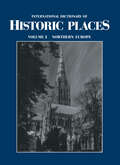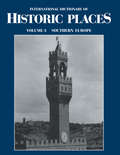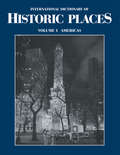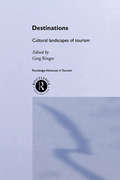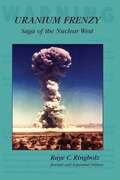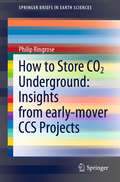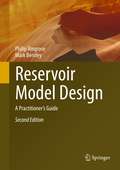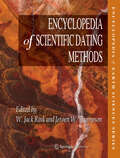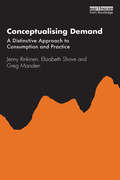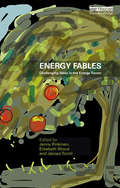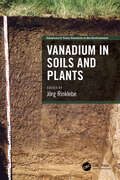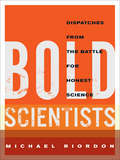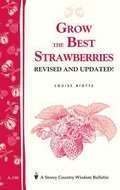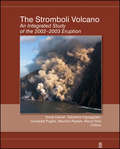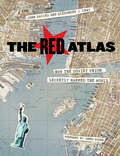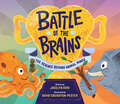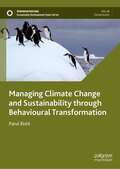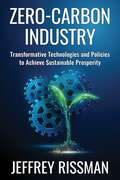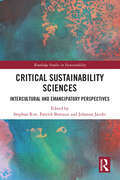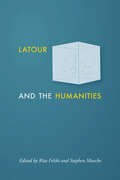- Table View
- List View
River Networks as Ecological Corridors: Species, Populations, Pathogens
by Andrea Rinaldo Marino Gatto Ignacio Rodriguez-IturbeRiver networks are critically important ecosystems. This interdisciplinary book provides an integrated ecohydrological framework blending laboratory, field, and theoretical evidence that changes our understanding of river networks as ecological corridors. It describes how the physical structure of the river environment impacts biodiversity, species invasions, population dynamics, and the spread of waterborne disease. State-of-the-art research on the ecological roles of the structure of river networks is summarized, including important studies on the spread and control of waterborne diseases, biodiversity loss due to water resource management, and invasions by non-native species. Practical implications of this research are illustrated with numerous examples throughout. This is an invaluable go-to reference for graduate students and researchers interested in river ecology and hydrology, and the links between the two. Describing new related research on spatially-explicit modeling of the spread of waterborne disease, this book will also be of great interest to epidemiologists and public health managers.
Physical Science: With Earth and Space Science (Holt Science Spectrum)
by Rinehart and Winston HoltHolt Science Spectrum: Physical Science: With Earth and Space Science
World Geography Today
by Holt Rinehart WinstonHave you ever wondered...why some places are deserts while other places get so much rain? What makes certain times of the year cooler than others? Why do some rivers run dry? Maybe you live near mountains and wonder what processes created them. You will learn about this and so much more in this book.
Holt Science & Technology: Earth Science, Reading Comprehension Guide
by Rinehart Winston Staff HoltNIMAC-sourced textbook
Who Really Makes Environmental Policy?: Creating and Implementing Environmental Rules and Regulations
by Sara R. RinfretThe United States Congress appears to be in perpetual gridlock on environmental policy, notes Sara Rinfret, editor of the significant collection, Who Really Makes Environmental Policy? As she and her contributors explain, however, most environmental policy is not made in the halls of Congress. Instead, it is created by agency experts in federal environmental agencies and it is implemented at the state level. These individuals have been delegated the authority to interpret vague congressional legislation and write rules—and these rules carry the same weight as congressional law. Who Really Makes Environmental Policy? brings together top scholars to provide an explanation of rulemaking processes and regulatory policy, and to show why this context is important for U.S. environmental policy. Illustrative case studies about oil and gas regulations in Colorado and the regulation of coal ash disposal in southeastern states apply theory to practice. Ultimately, the essays in this volume advance our understanding of how U.S. environmental policy is made and why understanding regulatory policy matters for its future.
Northern Europe: International Dictionary of Historic Places
by Trudy RingFirst published in 1996. Routledge is an imprint of Taylor & Francis, an informa company.
Southern Europe: International Dictionary of Historic Places
by Trudy Ring Robert M. Salkin Sharon La BodaFirst Published in 1996. Routledge is an imprint of Taylor & Francis, an informa company.
The Americas: International Dictionary of Historic Places
by Trudy Ring Robert M. Slakin Sharon La BodaFirst Published in 1996. Routledge is an imprint of Taylor & Francis, an informa company.
Destinations: Cultural Landscapes of Tourism (Routledge Advances in Tourism)
by Greg RingerThis book presents new directions both for tourism and cultural landscape studies in geography, crossing the traditional boundaries between the research of geographers and scholars of the tourism industry.Drawing on selected research from Europe, Southeast Asia, the Pacific and North America, the contributors combine perspectives in human geography and tourism to present cultural landscapes of tourist destinations as socially constructed places, examining the extent and manner by which tourism both establishes and falsifies local reality.The book addresses many critical themes which recent critiques in tourism studies focusing on the attitudes and behaviour of the tourist and on the industry as agents of social change have ignored, including the marginalization of the 'host' community, the privatization and commodification of local culture, and how tourism acts as both agent and process in the structure, identity and meaning of local places.
Uranium Frenzy: Saga of the Nuclear West
by Raye RingholzNow expanded to include the story of nuclear testing and its consequences, Uranium Frenzy has become the classic account of the uranium rush that gripped the Colorado Plateau region in the 1950s. Instigated by the U.S. government's need for uranium to fuel its growing atomic weapons program, stimulated by Charlie Steen's lucrative Mi Vida strike in 1952, manned by rookie prospectors from all walks of life, and driven to a fever pitch by penny stock promotions, the boom created a colorful era in the Four Corners region and Salt Lake City (where the stock frenzy was centered) but ultimately went bust. The thrill of those exciting times and the good fortune of some of the miners were countered by the darker aspects of uranium and its uses. Miners were not well informed regarding the dangers of radioactive decay products. Neither the government nor anyone else expended much effort educating them or protecting their health and safety. The effects of exposure to radiation in poorly ventilated mines appeared over time.
How to Store CO2 Underground: Insights from early-mover CCS Projects (SpringerBriefs in Earth Sciences)
by Philip RingroseThis book introduces the scientific basis and engineering practice for CO2 storage, covering topics such as storage capacity, trapping mechanisms, CO2 phase behaviour and flow dynamics, engineering and geomechanics of geological storage, injection well design, and geophysical and geochemical monitoring. It also provides numerous examples from the early mover CCS projects, notably Sleipner and Snøhvit offshore Norway, as well as other pioneering CO2 storage projects.
Reservoir Model Design: A Practitioner's Guide
by Philip Ringrose Mark BentleyThis book gives practical advice and ready to use tips on the design and construction of subsurface reservoir models. The design elements cover rock architecture, petrophysical property modelling, multi-scale data integration, upscaling and uncertainty analysis. Philip Ringrose and Mark Bentley share their experience, gained from over a hundred reservoir modelling studies in 25 countries covering clastic, carbonate and fractured reservoir types, and for a range of fluid systems – oil, gas and CO2, production and injection, and effects of different mobility ratios. The intimate relationship between geology and fluid flow is explored throughout, showing how the impact of fluid type, displacement mechanism and the subtleties of single- and multi-phase flow combine to influence reservoir model design.The second edition updates the existing sections and adds sections on the following topics:· A new chapter on modelling for CO2 storage· A new chapter on modelling workflows· An extended chapter on fractured reservoir modelling· An extended chapter on multi-scale modelling· An extended chapter on the quantification of uncertainty· A revised section on the future of modelling based on recently published papers by the authorsThe main audience for this book is the community of applied geoscientists and engineers involved in understanding fluid flow in the subsurface: whether for the extraction of oil or gas or the injection of CO2 or the subsurface storage of energy in general. We will always need to understand how fluids move in the subsurface and we will always require skills to model these quantitatively. The second edition of this reference book therefore aims to highlight the modelling skills developed for the current energy industry which will also be required for the energy transition of the future. The book is aimed at technical-professional practitioners in the energy industry and is also suitable for a range of Master’s level courses in reservoir characterisation, modelling and engineering.• Provides practical advice and guidelines for users of 3D reservoir modelling packages• Gives advice on reservoir model design for the growing world-wide activity in subsurface reservoir modelling• Covers rock modelling, property modelling, upscaling, fluid flow and uncertainty handling• Encompasses clastic, carbonate and fractured reservoirs • Applies to multi-fluid cases and applications: hydrocarbons and CO2, production and storage; rewritten for use in the Energy Transition.
Encyclopedia of Scientific Dating Methods
by W. Jack Rink Jeroen W. ThompsonThe most comprehensive survey of dating methods in the earth sciences, this book provides a synthesis of physical and chemical bases of dating methods, and the applications of dating methods to the geological sciences, biology, and archaeology.
Conceptualising Demand: A Distinctive Approach to Consumption and Practice
by Jenny Rinkinen Elizabeth Shove Greg MarsdenThis book addresses fundamental questions about the very idea of demand: how is it constituted, how does it change and how might it be steered? Conceptualising Demand focuses on five core propositions: that demand is derived from social practices; that it is made and not simply met; that it is materially embedded and temporally unfolding; and that it is modulated through many forms of policy and governance. In working through these claims, the book weaves concepts from the sociology of consumption, science and technology studies, policy analyses and social theories of practice together with empirical cases and new research into such topics as the rise of refrigerated foods, the emergence of online shopping and the transformation of energy demanding services. This innovative book takes a fresh look at the very idea of demand, a concept that is often taken for granted, but that is vital for scholars and students of energy, mobility, climate change and consumption, and anyone interested in the subject.
Energy Fables: Challenging Ideas in the Energy Sector
by Jenny Rinkinen Elizabeth Shove Jacopo TorritiEnergy Fables: Challenging Ideas in the Energy Sector takes a fresh look at key terms and concepts around which energy research and policy are organised. Drawing on recent research in energy and transport studies, and combining this with concepts from sociology, economics, social theory and technology studies, the chapters in this collection review and challenge different aspects of received wisdom. Brief but critical introductions to classic notions like those of ‘energy efficiency’, ‘elasticity’, ‘energy services’ and the ‘energy trilemma’, together with discussions and analyses of well-worn phrases about ‘low hanging fruit’ and ‘keeping the lights on’, articulate aspects of the energy debate that are often taken for granted. In re-working these established themes and adding twists to familiar tales, the authors develop a repertoire of new ideas about the fundamentals of energy demand and carbon reduction. This book presents a valuable and thought-provoking resource for students, researchers and policy-makers interested in energy demand, politics and policy.
Vanadium in Soils and Plants (Advances in Trace Elements in the Environment)
by Jörg RinklebeVanadium is an essential element for humans and animals. The toxicity of vanadium at higher concentrations could be a global environmental concern and a significant issue for both environmental protection and economic benefits. The relevance of anthropogenic vanadium in the environment has increased significantly in recent years due to an increased demand for vanadium in high-temperature industrial activities. This book summarizes vanadium’s current research and explains its behavior and mobilization in the environment, especially in soils, sediments, water and plants. Through case studies from various countries, it discusses critical limits set and risk assessment approaches and remediation approaches of vanadium-contaminated soils. FEATURES Provides a comprehensive overview of vanadium in the total environment Covers the role of vanadium in various environments such as soils, sediments, water and plants Includes bioavailability studies and further case studies from various countries around the world Focuses on a better understanding of biogeochemical processes of vanadium Is written by international experts who present the current stage of the knowledge including innovative remediation and management approaches of vanadium-contaminated sites This book will be of use to upper-level undergraduate and graduate students taking courses in soil science, environmental science, soil ecology, water science, plant science, ecotoxicology, geology and geography as well as scientists, lecturers, environmental and technical engineers, ecologists, applied ecological scientists and managers.
Bold Scientists: Dispatches from the Battle for Honest Science
by Michael RiordonAs governments and corporations scramble to pull the plug on research that proves that they are poisoning our planet and rush to muzzle the scientists who dare to share their disturbing data, it seems the powerful have declared a war on science. Michael Riordon asks deep questions of bold scientists who defy the status quo including: an Indigenous biologist who integrates traditional knowledge and a trickster’s wit; an engineering professor who exposes the myths and dangers of fracking; a forensic geneticist who traces children stolen by the military in El Salvador; a sociologist who investigates the lure and threat of mass surveillance; a radical psychologist who confronts psychiatry’s dangerous power; and a young marine biologist who risks her career to defend science and democracy. Who controls science and at what cost to the earth and its inhabitants? Can we change? This is unspun science for dangerous times.
Grow The Best Strawberries (Revised and Updated Edition)
by Louise RiotteHow to select, plant, care for, harvest and use strawberries.
The Stromboli Volcano
by Maurizio Ripepe Sonia Calvari Giuseppe Puglisi Salvatore Inguaggiato Mauro RosiPublished by the American Geophysical Union as part of the Geophysical Monograph Series, Volume 182.This book presents a study of the "eruptive crisis" that took place at the Stromboli volcano from December 2002 to July 2003.<P><P> It features an integrative approach to the monitoring of eruptive activity, including lava flow output, explosive activity, flank instability, submarine and subaerial landslides, tsunami, paroxysmal explosive events, and mitigation strategies.The book comes with a DVD with spectacular photos and video ofThe landslide and the tsunami that hit the coast of the island;The 5 April 2003 paroxysmal event;The whole eruption showing the stages of effusive activity and growth of the lava flow field;Selected data useful for testing geochemical, petrological, seismological, thermal, and ground deformation models.This multidisciplinary and multimedia experience, unique for the amount, quality, and variety of data it covers, can be applied to other active volcanoes. Stromboli will appeal to solid Earth scientists and students working in seismology, geodynamics, geochemistry, and mineral physics, as well as nonspecialists with an interest in the inner workings of our planet and others.
The Red Atlas: How the Soviet Union Secretly Mapped the World
by James Risen John Davies Alexander J. KentNearly thirty years after the end of the Cold War, its legacy and the accompanying Russian-American tension continues to loom large. Russia’s access to detailed information on the United States and its allies may not seem so shocking in this day of data clouds and leaks, but long before we had satellite imagery of any neighborhood at a finger’s reach, the amount the Soviet government knew about your family’s city, street, and even your home would astonish you. Revealing how this was possible, The Red Atlas is the never-before-told story of the most comprehensive mapping endeavor in history and the surprising maps that resulted. From 1950 to 1990, the Soviet Army conducted a global topographic mapping program, creating large-scale maps for much of the world that included a diversity of detail that would have supported a full range of military planning. For big cities like New York, DC, and London to towns like Pontiac, MI and Galveston, TX, the Soviets gathered enough information to create street-level maps. What they chose to include on these maps can seem obvious like locations of factories and ports, or more surprising, such as building heights, road widths, and bridge capacities. Some of the detail suggests early satellite technology, while other specifics, like detailed depictions of depths and channels around rivers and harbors, could only have been gained by actual Soviet feet on the ground. The Red Atlas includes over 350 extracts from these incredible Cold War maps, exploring their provenance and cartographic techniques as well as what they can tell us about their makers and the Soviet initiatives that were going on all around us. A fantastic historical document of an era that sometimes seems less distant, The Red Atlas offers an uncanny view of the world through the eyes of Soviet strategists and spies.
Battle of the Brains: The Science Behind Animal Minds
by Jocelyn RishA Junior Library Guild Gold Standard Selection! This hilarious companion to Battle of the Butts examines the way animals use their brainpower for survival in the wild and encourages readers to rank animals based on their intellectual prowess. Birdbrained. Pigheaded. Batty. Bullheaded. When humans want to insult the intelligence of another person, they often compare them to an animal. But animals are smart. Really, really smart. There are animals that use tools. Others that can solve complex problems. Some have excellent memories. A few can even talk to us! With animals having such mighty minds, the question is: who has the best brainpower of them all? That&’s for you to decide! Full of fascinating facts throughout in a fun "battle of the minds" format, The Battle of the Brains includes a glossary and links to sources and activities at the end, making it the perfect read for any curious mind.
Managing Climate Change and Sustainability through Behavioural Transformation (Sustainable Development Goals Series)
by Parul RishiThis book addresses climate change and sustainability management from a transdisciplinary perspective which encompasses within itself how different humanistic disciplines can culminate with each other to move ahead with the agenda. Issues of adapting to climate change and sustainability management have been gaining global prominence over the past few decades. There have also been volumes of literature that highlight the technical dimensions of climate change and sustainability across regions and cultures. However, they have had limited strength to bring direct and desirable impact in promoting pro-climate action and sustainability behaviour. The major reason for this is limited inclusion of pluralistic perspectives into human cognition and affect, and resultant limited public acceptability. Although behavioural science as a discipline has taken a front seat in promoting behavioural transformation, the book argues that other humanistic fields of understanding like education, art, literature, philosophy, political science, sociology, economics, etc., have to be integrated in order to present a holistic standpoint to sustainability literature.
Zero-Carbon Industry: Transformative Technologies and Policies to Achieve Sustainable Prosperity (Center on Global Energy Policy Series)
by Jeffrey RissmanThe power sector and transportation tend to dominate conversations about climate change, but there’s an under-the-radar source of climate pollution that must be addressed: industry. Globally, industrial activity is responsible for one-third of human-caused greenhouse gas emissions. Though industry is a major emitter, it is essential for producing the tools we need to fight climate change—like wind turbines, solar panels, and electric vehicles—and for meeting our everyday needs. How can industry eliminate its climate pollution while supplying transformational technologies?This book delivers a first-of-its-kind roadmap for the zero-carbon industrial transition, spotlighting the breakthrough innovations transforming the manufacturing sector and the policies that can accelerate this global shift. Jeffrey Rissman illustrates the scope of the challenge, diving into the workings of heavy polluters like steel, chemicals, plastics, cement, and concrete. He examines ways to affordably decarbonize manufacturing, such as electrifying industrial processes, using hydrogen, deploying carbon capture and storage, and growing material efficiency with lightweighting and 3D printing. But technologies are only part of the picture. Enacting the right policies—including financial incentives, research and development support, well-designed carbon pricing, efficiency and emissions standards, and green public procurement—can spur investment and hasten emissions reductions. Rissman provides a framework to ensure that the transition to clean industry enhances equity, health, and prosperity for communities worldwide.Engaging and comprehensive, Zero-Carbon Industry is the definitive guide to decarbonizing the vast—yet often overlooked—global industrial sector.
Critical Sustainability Sciences: Intercultural and Emancipatory Perspectives (Routledge Studies in Sustainability)
by Stephan Rist Patrick Bottazzi Johanna JacobiThis book explores Critical Sustainability Sciences, a new field of scientific inquiry into sustainability issues. It builds on a highly novel integration of elements from relational ontologies, critical theory, political ecology, and intercultural philosophy in support of emancipatory perspectives on sustainability and development. The book Critical Sustainability Sciences begins by uncovering the weaknesses of mainstream sustainability science and debates on sustainable development. The new field of Critical Sustainability Sciences has grown out of a deep engagement with relational ontologies, which helps to overcome the dualist ontology underlying mainstream notions of sustainability and development. Dualist ontologies reinforce problematic anthropocentric divisions, for example, between humans and nature, subjects and objects, mind and matter, body and soul, etc. Examples from indigenous peoples in Bolivia, India, and Ghana – as well as integrative movements in Chile, Brazil, and Europe – show that relational conceptions of life, rooted in ecosophy and cosmosophy, can provide an intercultural philosophical foundation for Critical Sustainability Sciences. The book concludes by describing three key topics for exploration in Critical Sustainability Sciences: societal reorganization in view of emancipatory, existential, and cognitive self-determination; living labor and commons; and the development of new comprehensive relational scientific paradigms. This book will be of great interest to students, scholars, and practitioners of emancipatory and intercultural approaches to sustainability and development.
Latour and the Humanities
by Rita Felski and Stephen MueckeHow does the work of influential theorist Bruno Latour offer a fresh angle on the practices and purposes of the humanities?In recent years, defenses of the humanities have tended to argue along predictable lines: the humanities foster empathy, the humanities encourage critical thinking, the humanities offer a counterweight to the cold calculations of the natural and social sciences. The essays in Latour and the Humanities take a different approach. Exploring the relevance of theorist Bruno Latour's work, they argue for attachments and entanglements between the humanities and the sciences while looking closely at the interests, institutions, and intellectual projects that shape the humanities within and beyond the university. The collection, which is written by a group of highly distinguished scholars from around the world, is divided into two sections. In the first part, authors engage in depth with Latour's work while also rethinking the ties between the humanities and the sciences. Essays argue for greater attention to the nonhuman world, the urgency of climate change, and more nuanced views of universities as institutions. The second half of the volume contains essays that reflect on Latour's influence on the practices of specific disciplines, including art, the digital humanities, film studies, and political theory.Inspiring conversation about the relevance of actor-network-theory for research and teaching in the humanities, Latour and the Humanities offers a substantial introduction to Latour's work while discussing the humanities without falling back on the genres of either the sermon or the jeremiad. This volume will be of interest to all those searching for fresh perspectives on the value and importance of humanistic disciplines and thought.Contributors: David J. Alworth, Anders Blok, Claudia Breger, Dipesh Chakrabarty, Yves Citton, Steven Connor, Gerard de Vries, Simon During, Rita Felski, Francis Halsall, Graham Harman, Antoine Hennion, Casper Bruun Jensen, Bruno Latour, Heather Love, Patrice Maniglier, Stephen Muecke, Barbara Herrnstein Smith, Nigel Thrift, Michael Witmore

